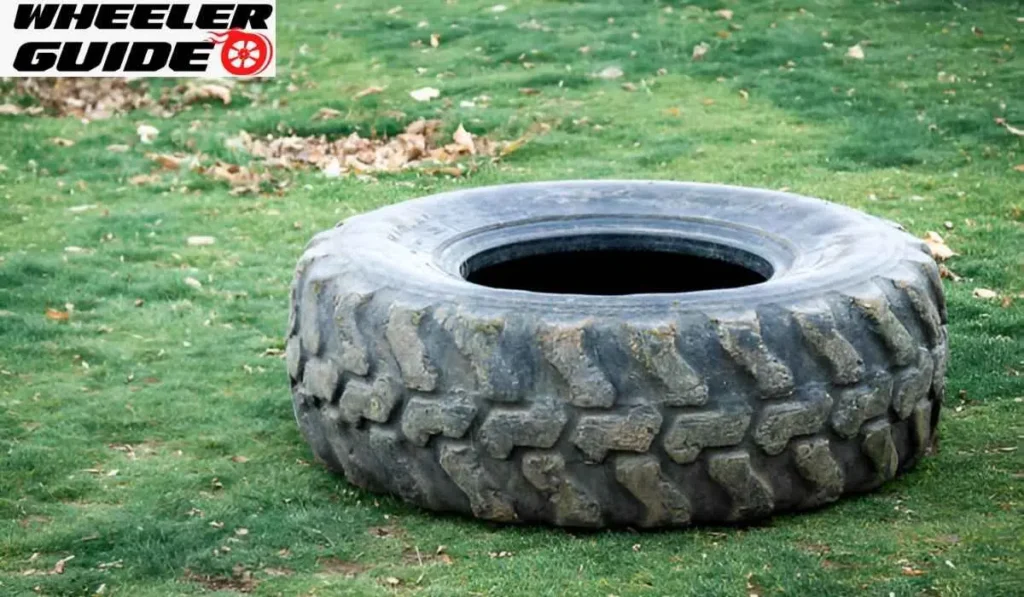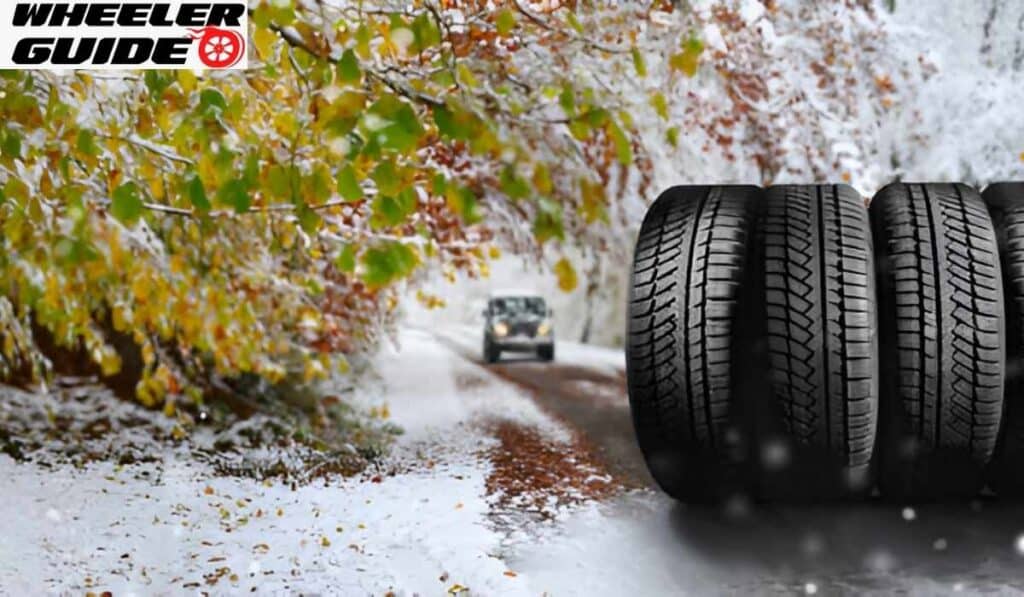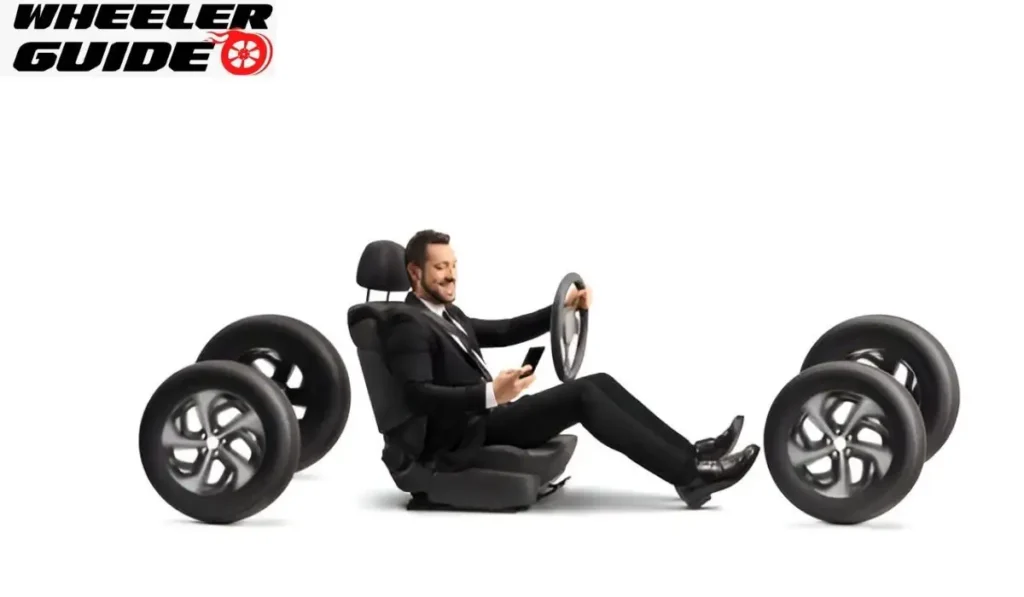XL-rated tires are a special type of tire designed to carry extra weight. These tires have stronger sidewalls and can handle higher air pressure than standard tires. XL tires can support up to 15% more weight than regular tires of the same size.
Tires marked with XL (e.g., 205/65 R15 XL, above) include “Extra Load” in their name and are commonly used on heavier vehicles or on cars that often carry heavy loads. They provide better handling and stability, especially when driving faster or with the car fully loaded. It recommends them for use in SUVs, large sedans, and in light-duty pickups when towing.
The XL tires though have several benefits, but they also come with some demerits. Because of their stiffer construction, they can make for a rougher ride than standard tires. There is also likely to be a knock-on effect on fuel efficiency, with the greater rolling resistance. This means that one must take these elements into account, to determine whether a set of XL tires is the best option for their vehicle.
- What Are XL-Rated Tires and Why Are They Important?
- What Is the Load Index?
- Where to Find the Load Index on a Tire
- How to Find the Load Index on a Tire?
- Benefits of XL-Rated Tires
- Common Applications of XL-Rated Tires
- How to Identify XL-Rated Tires
- Differences Between XL, SL, and LT Tires
- When Should You Upgrade to XL-Rated Tires?
- How to Safely Use XL-Rated Tires
- Frequently Asked Questions
What Are XL-Rated Tires and Why Are They Important?
XL-rated tires are a special type of tire designed to handle extra weight. The letters “XL” stand for “Extra Load,” which means these tires can carry more weight than standard tires. Understanding tire specifications is crucial for vehicle performance and safety. XL tires play a key role in this.
XL tires have stronger sidewalls that allow them to hold more air pressure. This extra strength helps them support heavier loads without changing the tire’s size.
Some key features of XL tires include:
- Higher load capacity
- Stronger construction
- Same size as standard tires
- Ability to handle more air pressure
XL tires are important for several reasons:
- Safety: They can safely carry heavier loads without risk of failure.
- Versatility: They work well on various vehicle types, from cars to SUVs.
- Performance: They can improve handling and stability, especially when carrying heavy loads.
XL tires are often used on vehicles that frequently carry heavy loads or have high-performance needs. This includes limousines, trucks, and even some fuel-efficient cars. Drivers should check their vehicle’s manual to see if XL tires are recommended. Using the right tire type helps ensure optimal vehicle performance and safety.
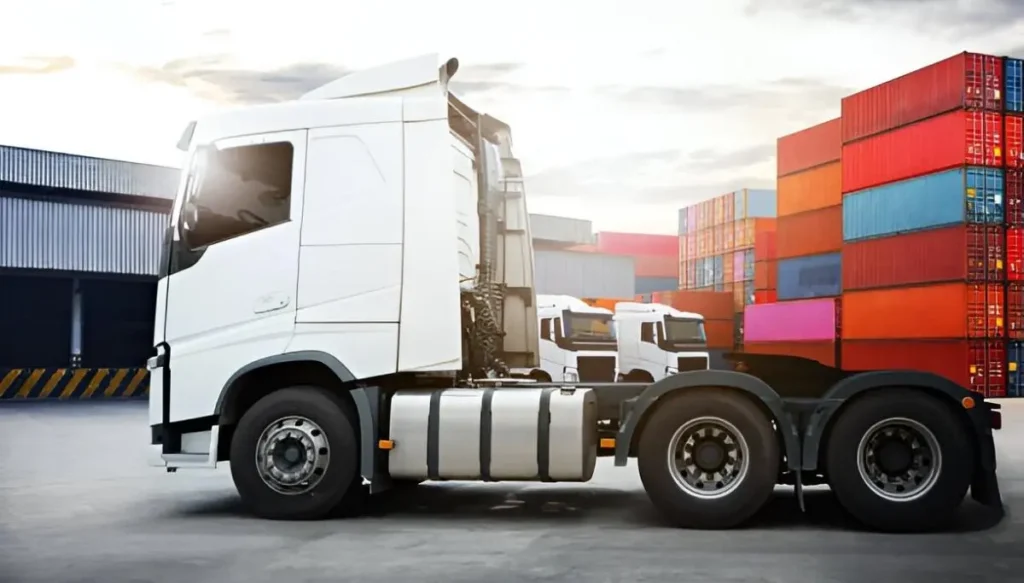
What Is the Load Index?
The load index represents the maximum load of weight a tire can withstand safely. Also, it contributes to the safety and performance of tires. The acquired rank figures prominently on the tire sidewall. It is generally a specific weight in pounds or kilograms, which corresponds to this number.
For example, a load index of 92 means the tire can support 1,389 pounds at maximum air pressure. To find a vehicle’s total load capacity, multiply this by four (for four tires). Load index numbers typically range from 70 to 126 for passenger vehicles. Higher numbers mean the tire can carry more weight.
Here’s a quick guide to some common load index values:
- 85 = 1,135 lbs
- 90 = 1,323 lbs
- 95 = 1,521 lbs
- 100 = 1,764 lbs
It’s crucial to choose tires with the right load index for your vehicle. Using tires with too low a load index can be dangerous and lead to tire failure. The load index is more precise than the load range for measuring a tire’s capacity. It provides specific weight limits rather than general categories. When buying new tires, always check that the load index meets or exceeds your vehicle manufacturer’s recommendations. This ensures safe driving and optimal tire performance.
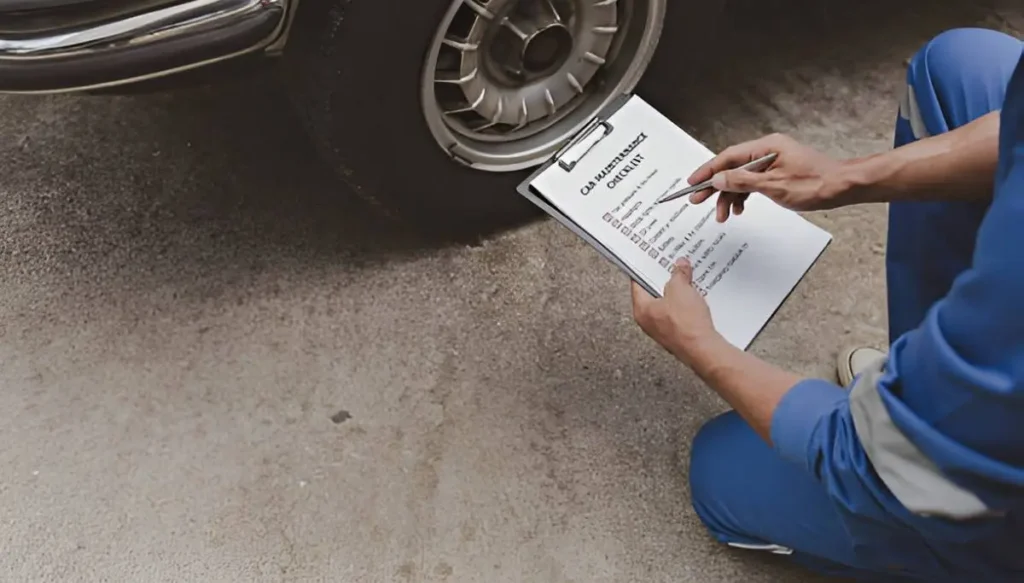
Where to Find the Load Index on a Tire
The load index on a tire is located on its sidewall. It appears as a two-digit or three-digit number after the tire size information.
For example, if you see “225/45R17 94H” on your tire, the “94” represents the load index.
Here’s a quick guide to finding the load index:
- Look at the tire’s sidewall
- Find the size information (e.g., 225/45R17)
- The number immediately following is the load index
Light truck tires may have two load indexes listed. These are separated by a forward slash, like “120/116”.
Please note that the load index is not the same as the ply rating The ply rating is not to be confused with the load index. Load Index: A load index chart will be required to understand it. The number is translated into the amount of weight (each tire can safely hold up the weight limit). Keep in mind the load index to get the most effective set of tires for your car. Choose only tires with a load index equal to or greater than the one originally specified by the vehicle manufacturer.
How to Find the Load Index on a Tire?
The load index on a tire is easy to spot once you know where to look. It’s part of the series of markings on the tire’s sidewall. Look for a set of numbers and letters after the tire size information. For example, you might see something like “225/55 R17 101 W”.
In this case, “101” is the load index. It’s typically a two or three-digit number. To understand what the load index means, you’ll need to refer to a load index chart. These charts show the maximum weight a tire can safely support. For instance, a load index of 101 means the tire can carry up to 1,819 pounds at maximum air pressure.
Remember, this weight capacity is per tire. To find your vehicle’s total load capacity, multiply the per-tire weight by four. Always check your vehicle’s manual to ensure you’re using tires with the correct load index for your car’s weight and needs.
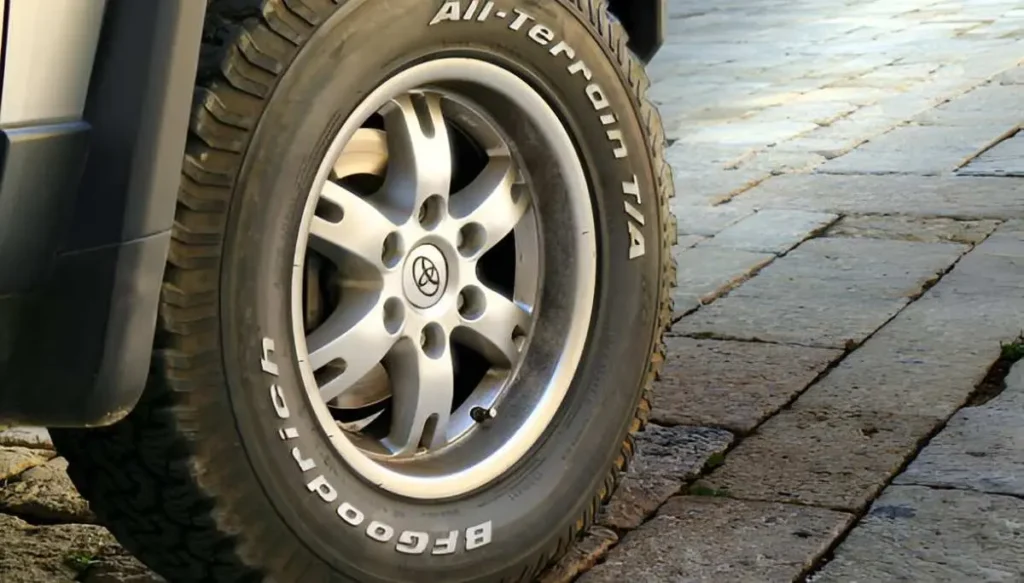
Benefits of XL-Rated Tires
Drivers Gain Benefits with XL-rated tires They are designed for carrying heavier wheels and working under tougher circumstances. XL tires also boast benefits, chief among them is the increased load capacity. They add some additional weight to the scooters, but without putting in danger its riders or performance. This makes them great for towing or hauling heavy stuff. XL tires also have upgraded durability. Reinforced construction ensures that they can take a lot more abuse, lasting all the longer under heavy use.
Improved handling and stability are additional perks of XL-rated tires. The stiffer sidewalls provide better control, especially at high speeds or during sudden maneuvers. These tires also offer better traction in various conditions. Their robust design helps maintain better contact with the road, enhancing grip and safety. For drivers who frequently carry heavy loads or drive in demanding conditions, XL tires can provide peace of mind. They offer a higher margin of safety and performance compared to standard tires.
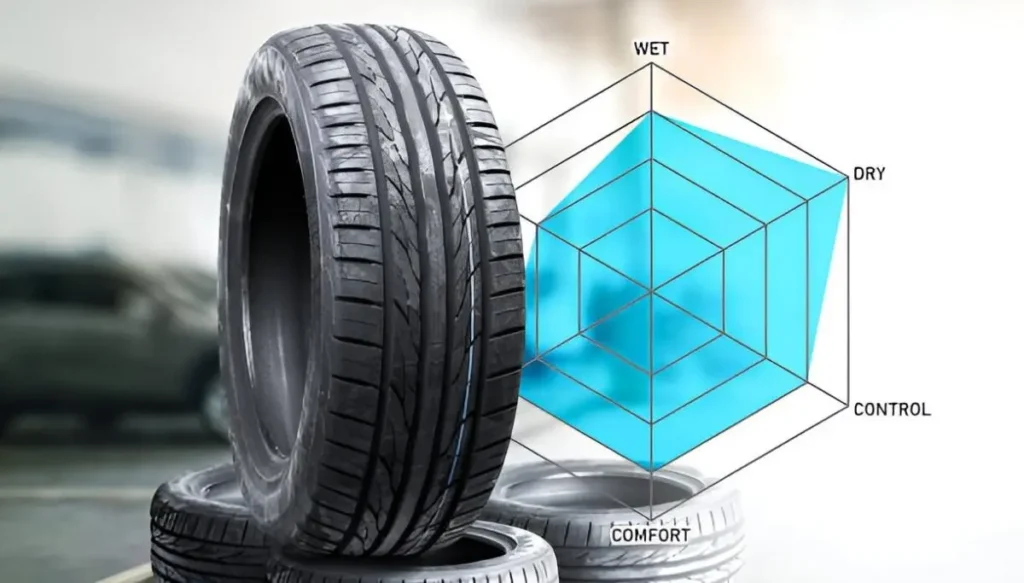
Common Applications of XL-Rated Tires
XL-rated tires find their place in various vehicles and driving scenarios. SUVs and crossovers often use XL tires due to their ability to handle extra weight and cargo. Trucks, especially pickup and light-duty models, benefit from XL tires when hauling heavy loads. These tires provide added stability and support for the increased weight. Vans, both commercial and passenger types, can make good use of XL tires. They help manage the vehicle’s weight and any additional cargo or passengers. Off-road enthusiasts may opt for XL tires on their vehicles. The reinforced construction helps withstand rough terrain and provides better puncture resistance.
XL tires are also suitable for vehicles that frequently carry heavy loads. This includes:
- Work vehicles
- Delivery vans
- Family cars used for road trips
XL sizes are also used on high-performance cars. Increased load capacity assists in controlling the forces created by high-speed driving and cornering. They are more robust, which can be useful for drivers who regularly drive on bad road surfaces. Potholes, rocks, and the like can be handled much better. Great for towing, though; we like the XL tires In the case of a car, extra bracing is needed when towing a trailer or boat.
How to Identify XL-Rated Tires
XL-rated tires have special markings on their sidewalls. To spot them, look for the letters “XL” after the tire size information. For example, a tire might be labeled “225/45R17 94W XL”. The load index and speed rating also help identify XL tires. XL tires typically have higher load indexes than standard tires of the same size. This means they can carry more weight.
Here’s a quick guide to reading tire sidewall markings:
- Tire size (e.g., 225/45R17)
- Load index (e.g., 94)
- Speed rating (e.g., W)
- XL designation
Sometimes, tire makers use other terms instead of XL. These include “Extra Load” or “Reinforced”. XL tires offer enhanced load capacity compared to standard tires. The tire’s load index is a number that corresponds to its maximum load capacity. A higher number means the tire can carry more weight. XL tires usually have a higher load index than regular tires of the same size. Speed ratings are shown as letters. They indicate the maximum speed a tire can safely maintain. XL tires often have higher speed ratings to match their increased load capacity.
To be sure, always check the tire’s full specifications. This information can be found on the sidewall or in the manufacturer’s documentation.
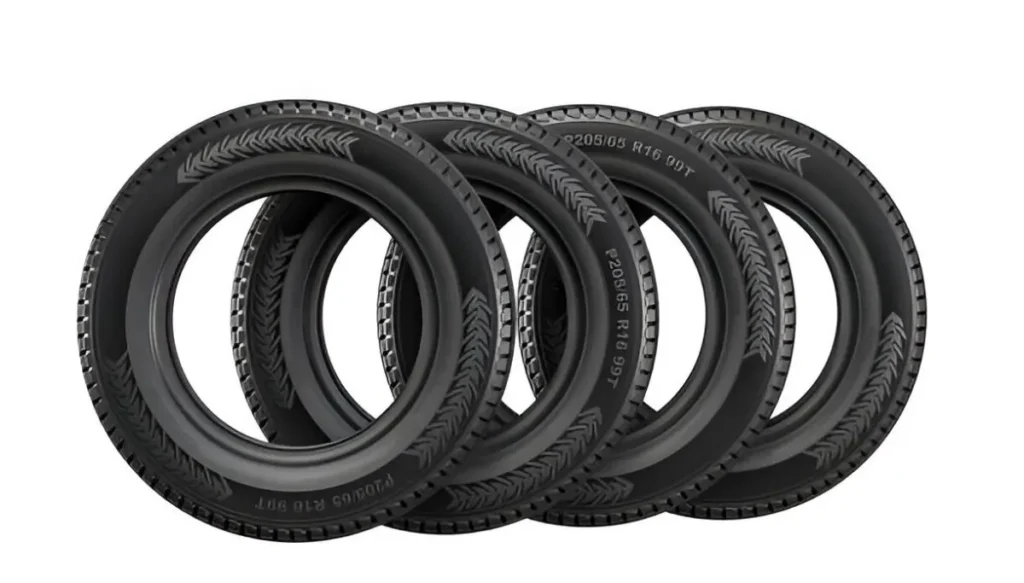
Differences Between XL, SL, and LT Tires
XL, SL, and LT tires have distinct features that set them apart. Let’s explore these differences: XL (Extra Load) tires can carry heavier loads than standard tires. They have stiffer sidewalls and can handle higher air pressure. SL (Standard Load) tires are designed for typical passenger vehicles. They offer good performance and fuel efficiency for everyday driving. LT (Light Truck) tires are built for trucks and SUVs. They have stronger sidewalls and can handle heavy loads and rough terrain.
Load capacity is a key difference:
- XL tires: Up to 10% more weight than SL
- SL tires: Lower load index (75-100)
- LT tires: Highest load capacity
Pressure ratings also vary:
- XL tires: Max pressure of 41 psi
- SL tires: Max pressure of 35 psi
- LT tires: Can handle even higher pressures
When choosing between these tire types, consider your vehicle’s weight, typical cargo, and driving conditions. XL tires suit heavier passenger cars, while LT tires are best for trucks and off-road use. XL and LT tires differ in design and performance. XL tires offer a smoother ride on paved roads, while LT tires excel in rugged conditions.
When Should You Upgrade to XL-Rated Tires?
XL-rated tires are designed for extra load capacity. They’re a good choice for vehicles that carry heavy loads or tow trailers.
Drivers should consider upgrading to XL tires if they notice:
• Excessive tire wear • Frequent tire pressure loss • Handling issues when carrying heavy loads
XL tires can benefit:
- Heavy-duty trucks
- SUVs
- Vans
- Vehicles used for towing
These tires have stronger sidewalls that can handle more weight. This makes them ideal for work vehicles or those that often carry heavy cargo.
XL tires can improve vehicle performance by:
- Increasing load capacity
- Enhancing stability
- Reducing tire flex under heavy loads
However, XL tires may not be required for everyday drivers. For the drivers that are constantly taxing their vehicle in other words: pushing its weight limits the upgrade might bring with it peace of mind and enhanced performance. Before making a change to XL tires, be sure to review the vehicle manufacturer’s requirements. Not all vehicles will need this added capacity, some may.
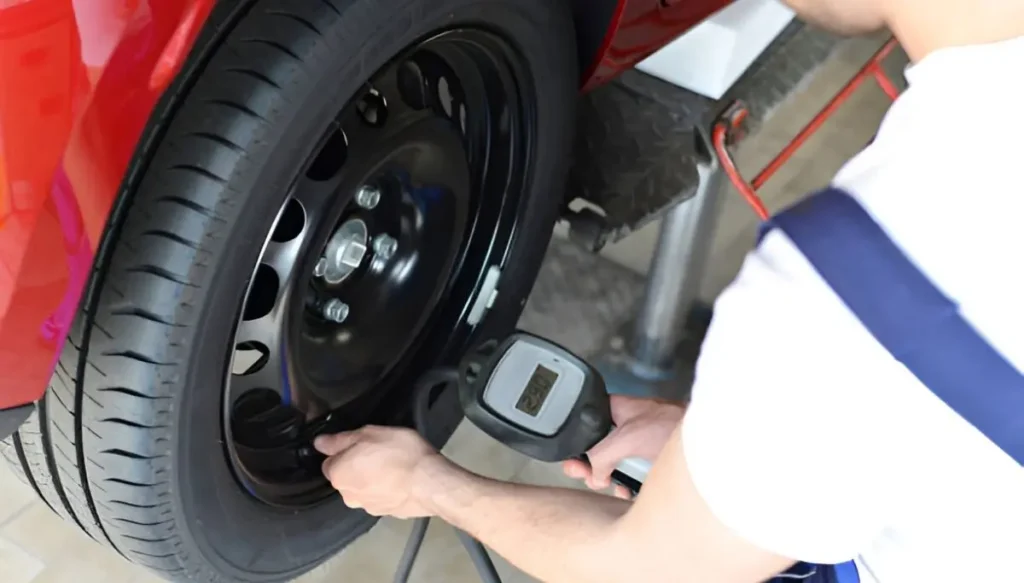
How to Safely Use XL-Rated Tires
XL-rated tires offer enhanced load capacity and improved handling. To use them safely, drivers should follow these guidelines: Maintain proper tire pressure: Check the pressure regularly, and inflate to the recommended PSI. This is usually higher for XL tires compared to standard ones.
Respect weight limits: Even though XL tires can handle more weight, it’s crucial not to exceed the vehicle’s maximum load capacity. Distribute weight evenly: When loading a vehicle, spread the weight out to avoid putting too much stress on any single tire.
Drivers should also be aware of these points:
- Monitor tire wear regularly
- Rotate tires according to the manufacturer’s schedule
- Replace tires when the tread depth reaches 2/32 of an inch
XL tires may provide a firmer ride due to their stiffer construction. Drivers should adjust their driving style accordingly, especially on rough roads. It’s important to match all four tires. Mixing XL and non-XL tires can affect handling and safety. Lastly, drivers should always refer to their vehicle’s manual for specific tire recommendations. This ensures compatibility with the vehicle’s design and safety features.
Frequently Asked Questions
Can I install XL tires on my standard car without modifications?
Most standard cars can use XL tires without changes. Check your car’s manual for tire size and load rating. Make sure the new tires match these specs. XL tires may change how your car handles. They can affect steering and suspension. Talk to a tire expert before switching.
What performance differences should I expect when switching to XL tires for a sports car?
Sports cars with XL tires may have better grip and stability. XL tires offer improved handling, especially at high speeds. The ride might feel firmer. XL tires have stiffer sidewalls. This can lead to less comfort on bumpy roads.
How do XL tires compare to E-rated tires in terms of load capacity?
XL tires have a lower load capacity than E-rated tires. E-rated tires are made for light trucks and can carry heavier loads. XL tires work well for passenger cars and SUVs. E-rated tires suit trucks and large SUVs better.
Are there any drawbacks to using XL tires on a small car?
Small cars with XL tires may have a stiffer ride. The extra weight of XL tires can affect fuel economy. Handling might change. XL tires can make steering feel heavier. This may not suit all drivers of small cars.
Why might XL tires be priced lower than other types of tires?
XL tires can be cheaper due to their simpler design. They often use less rubber than specialized tires. High demand can lead to lower prices. Many cars use XL tires, allowing for mass production.
Is there a significant impact on fuel economy when using XL tires?
XL tires can slightly reduce fuel economy. Their stiffer construction creates more rolling resistance. The impact is usually small. Most drivers won’t notice a big change in gas mileage with XL tires.
